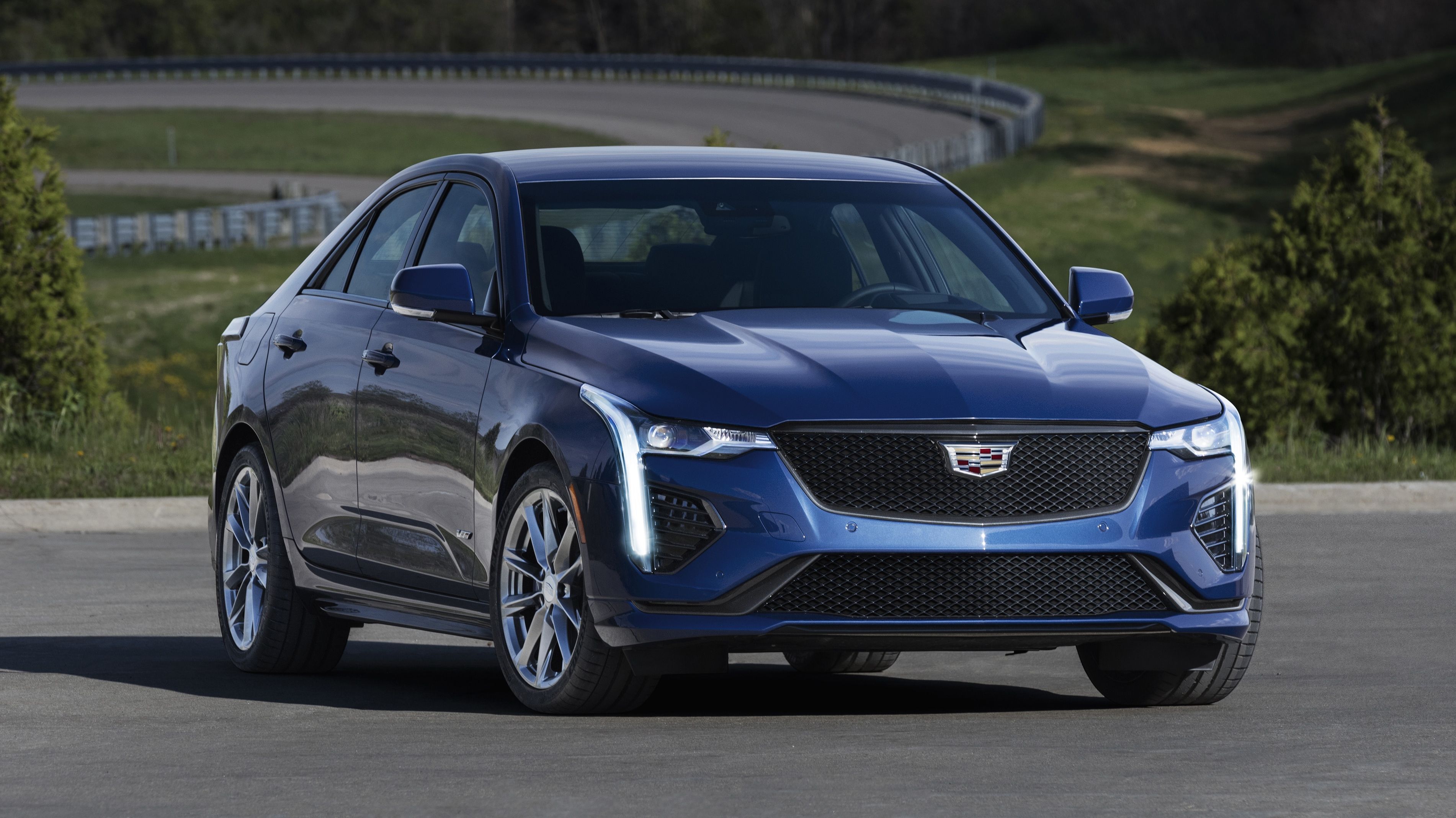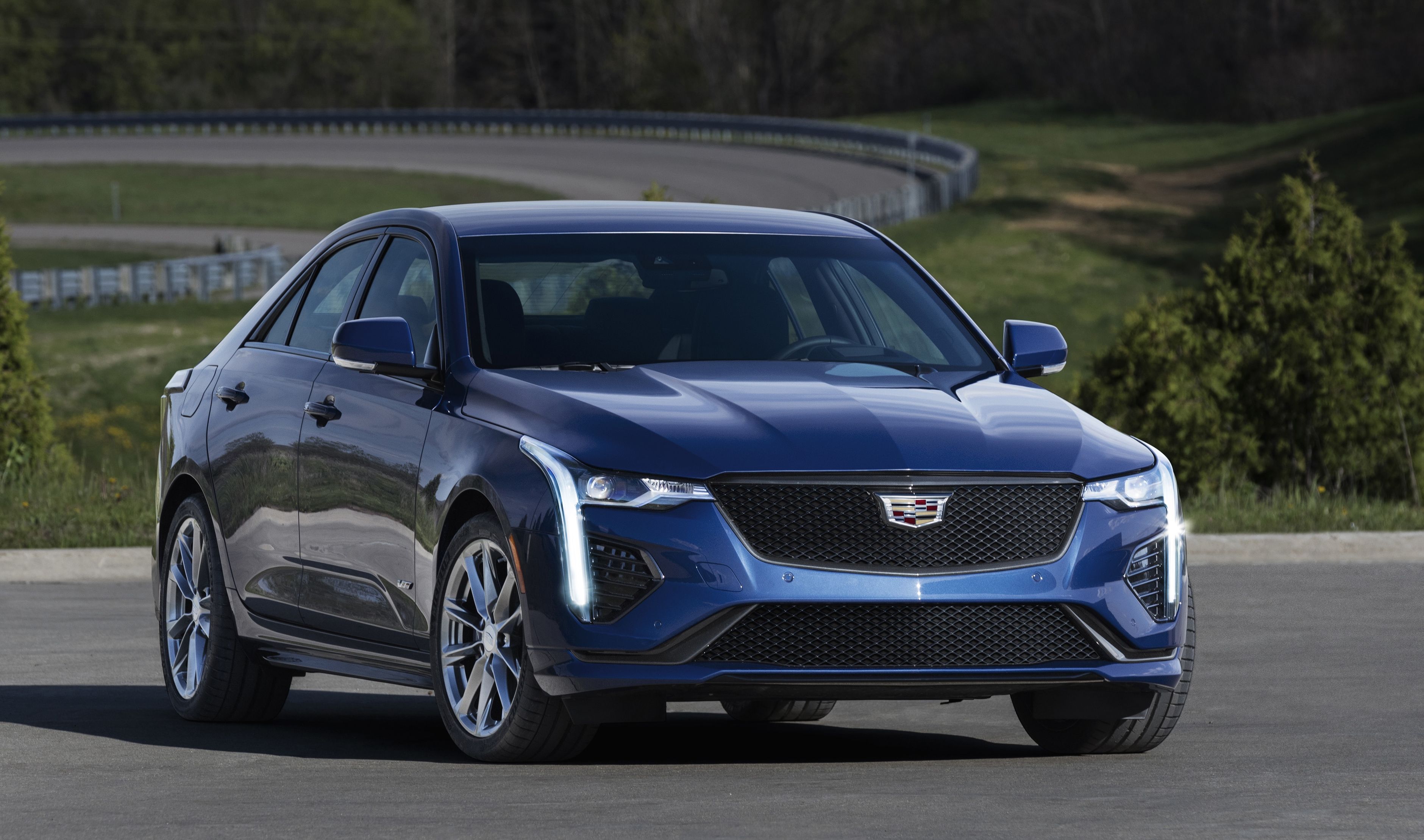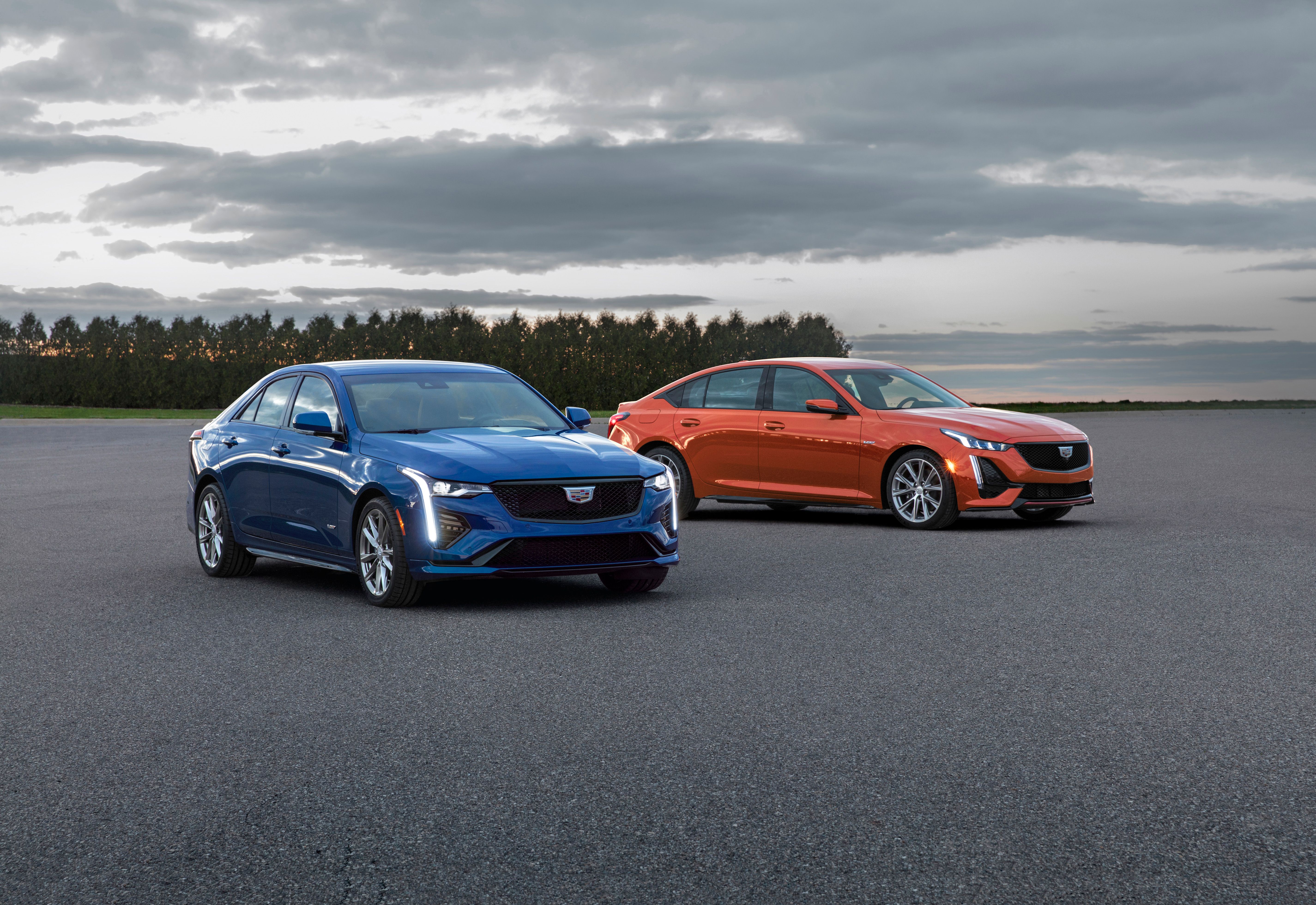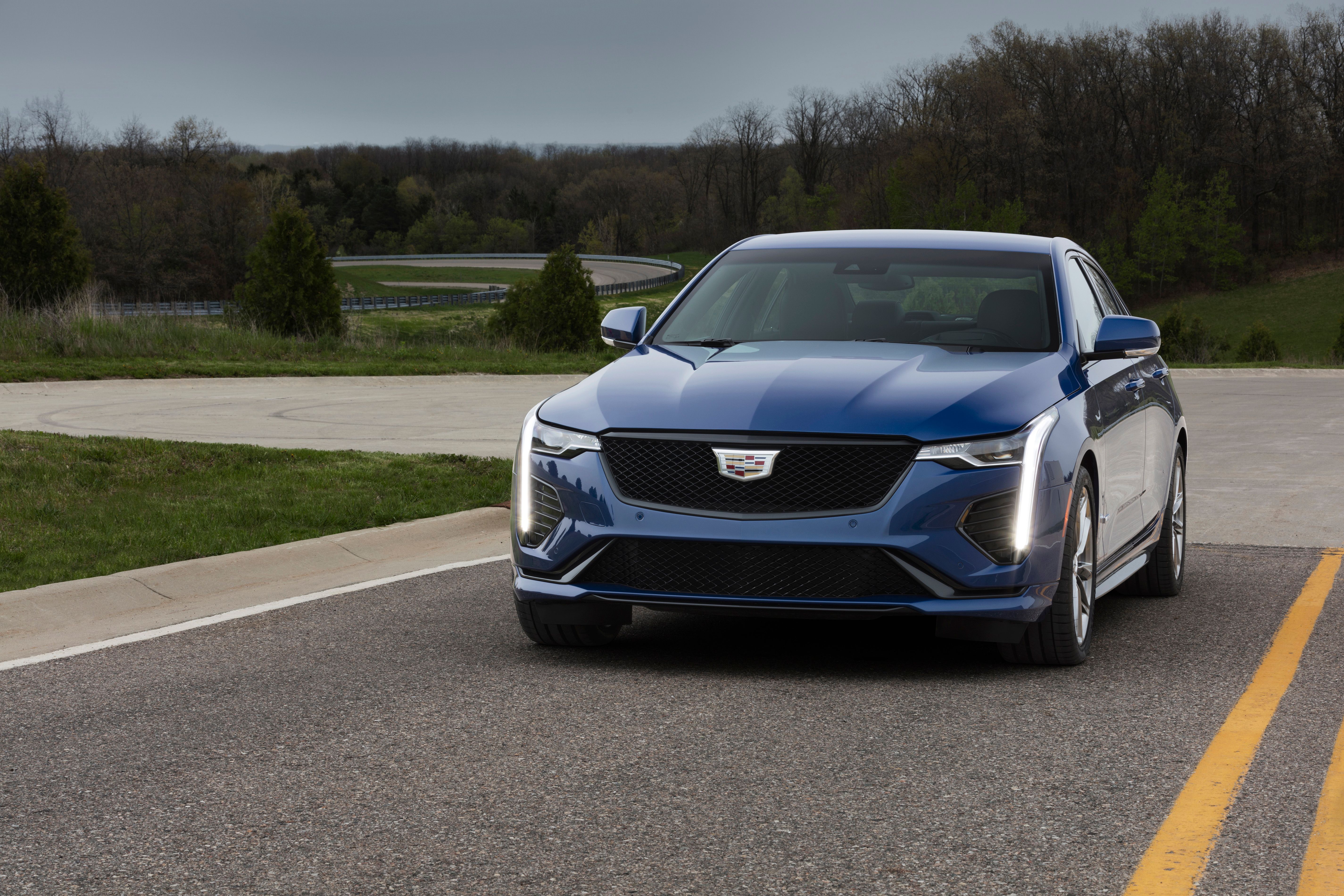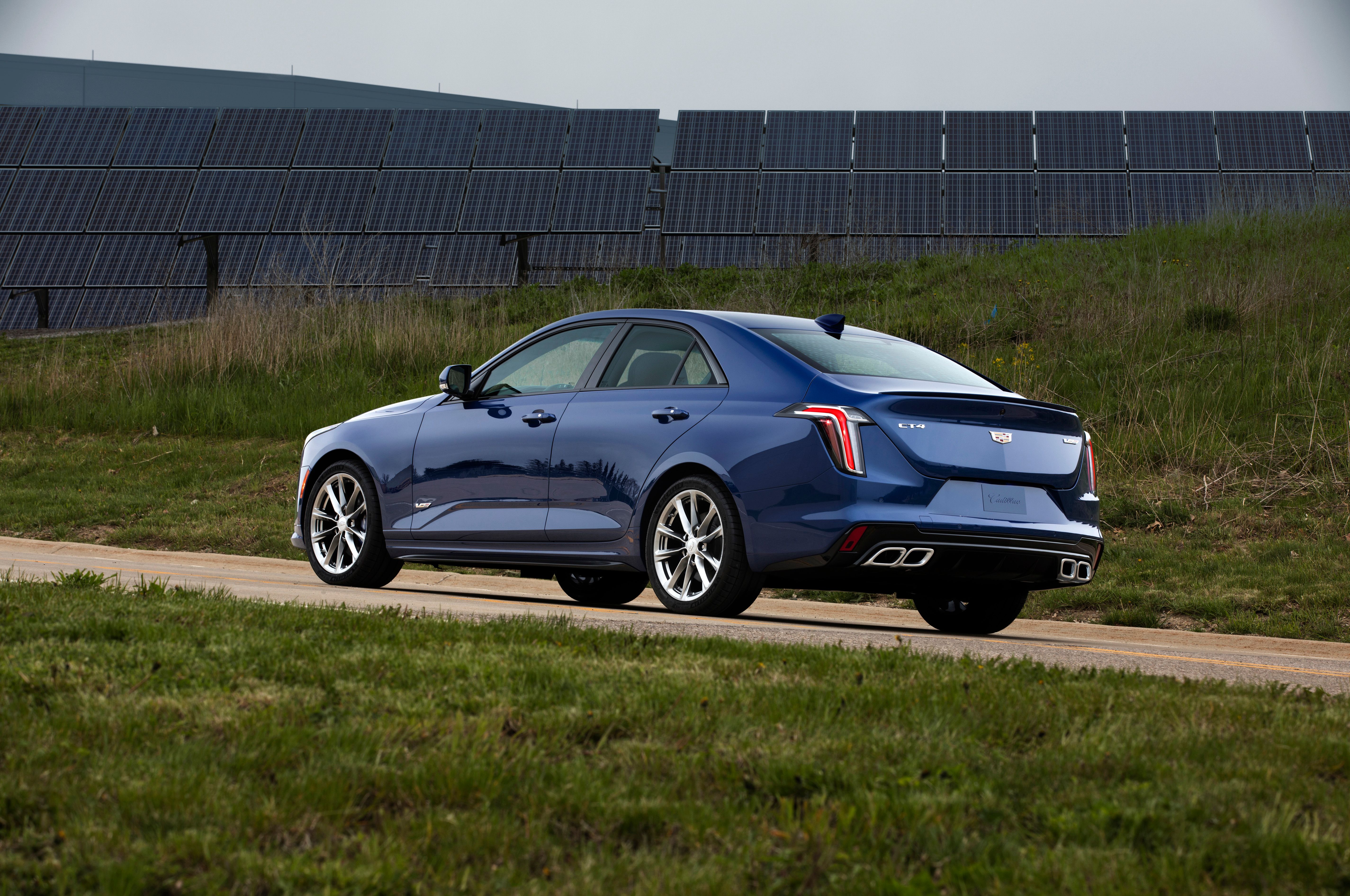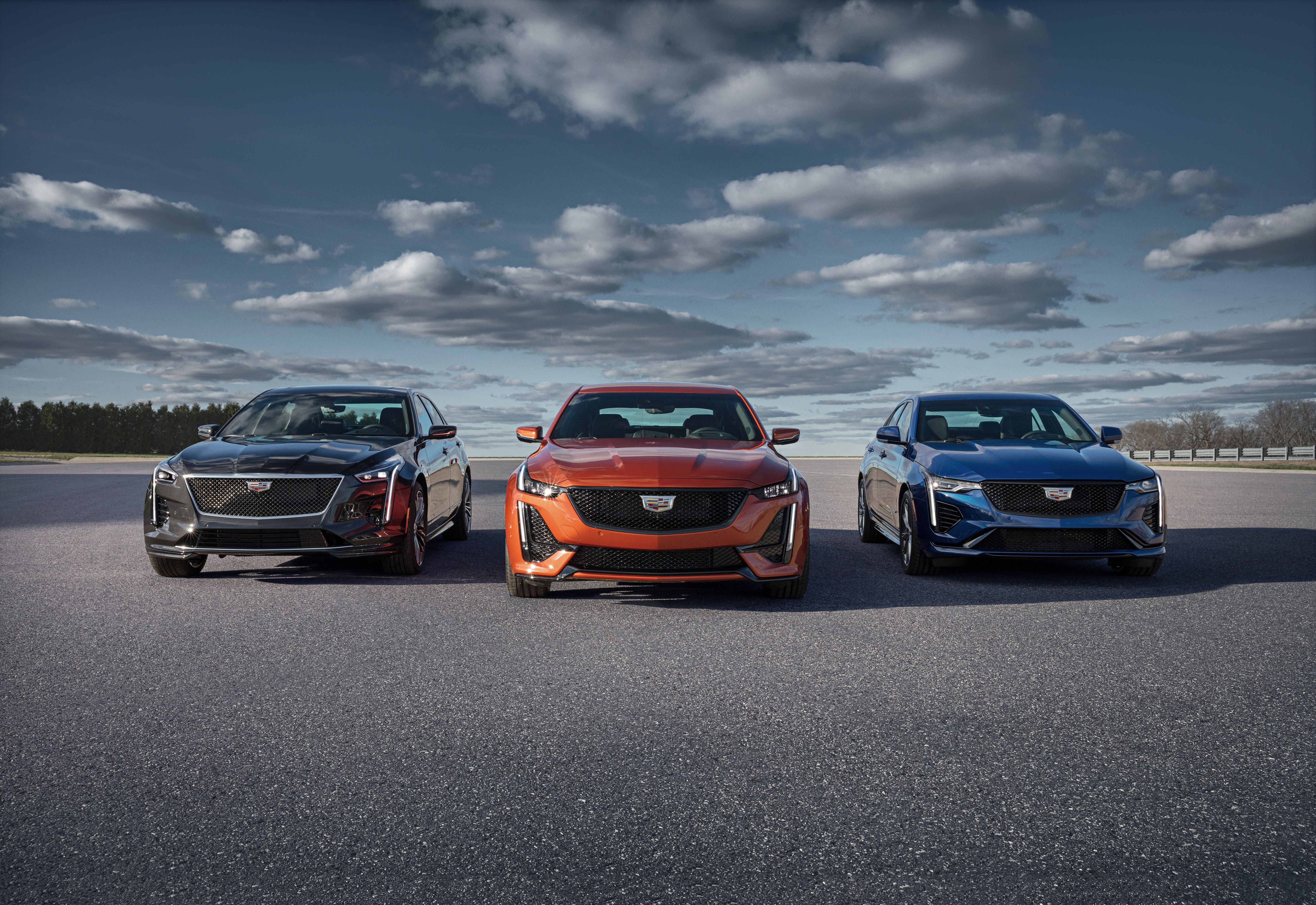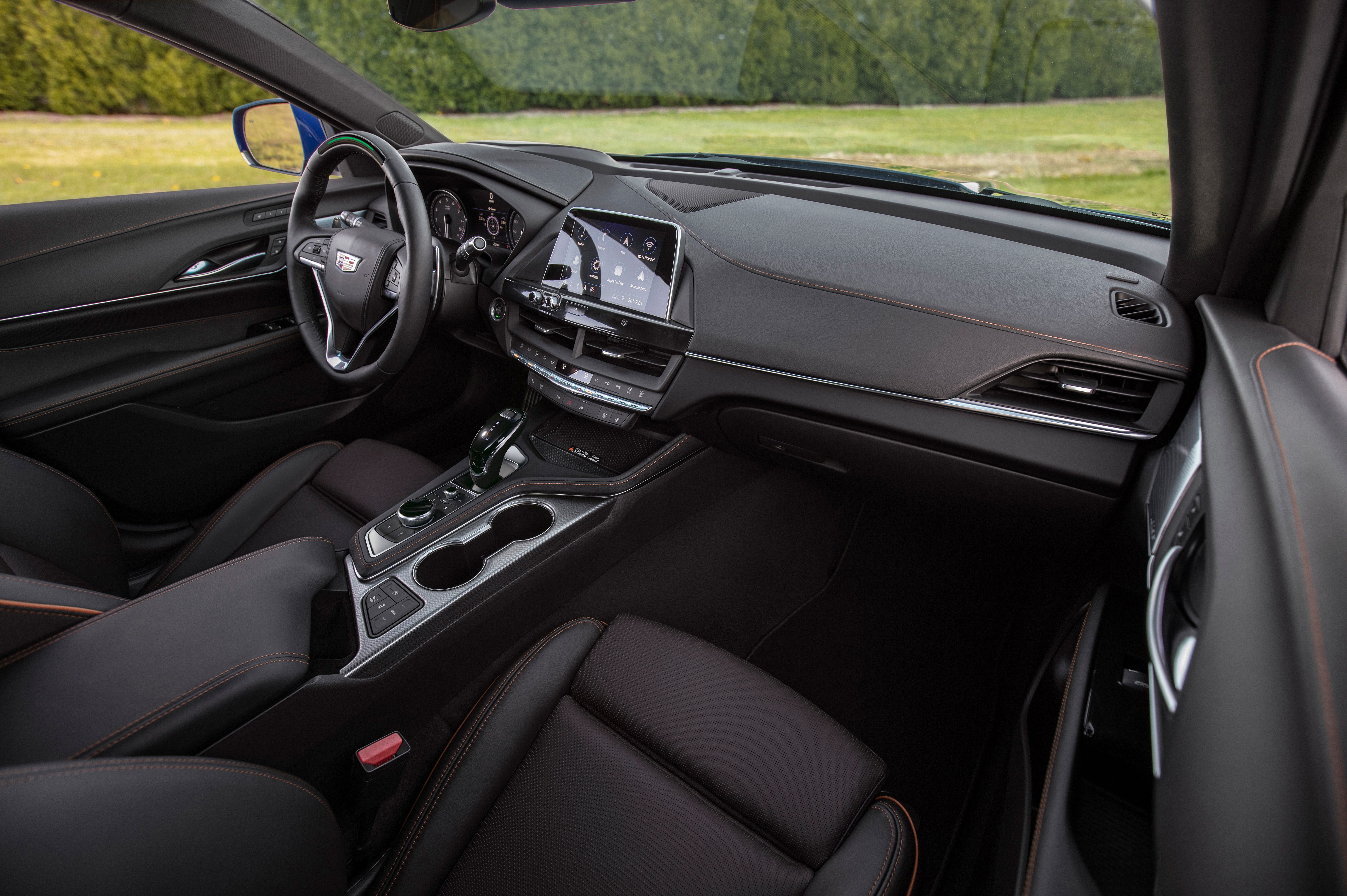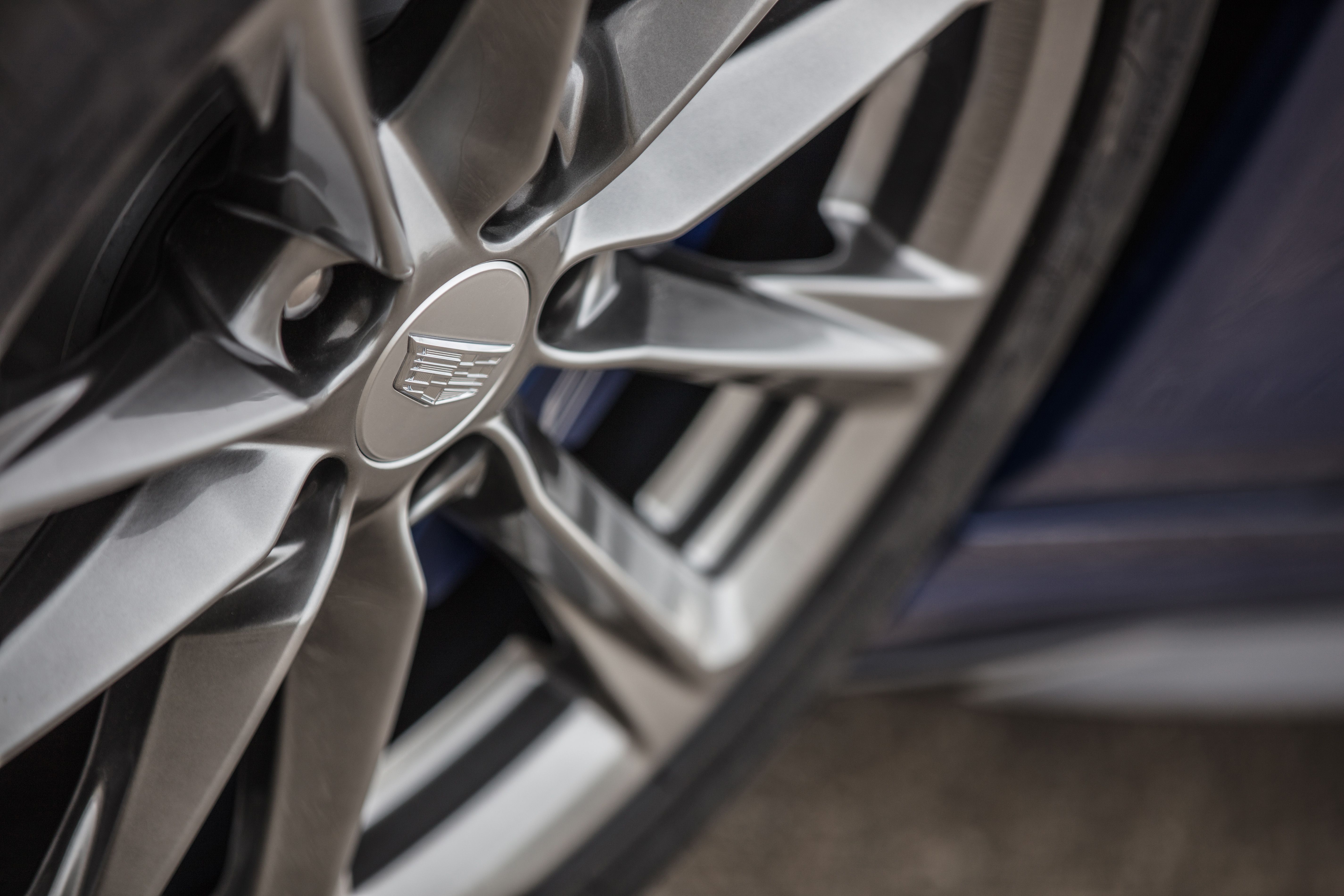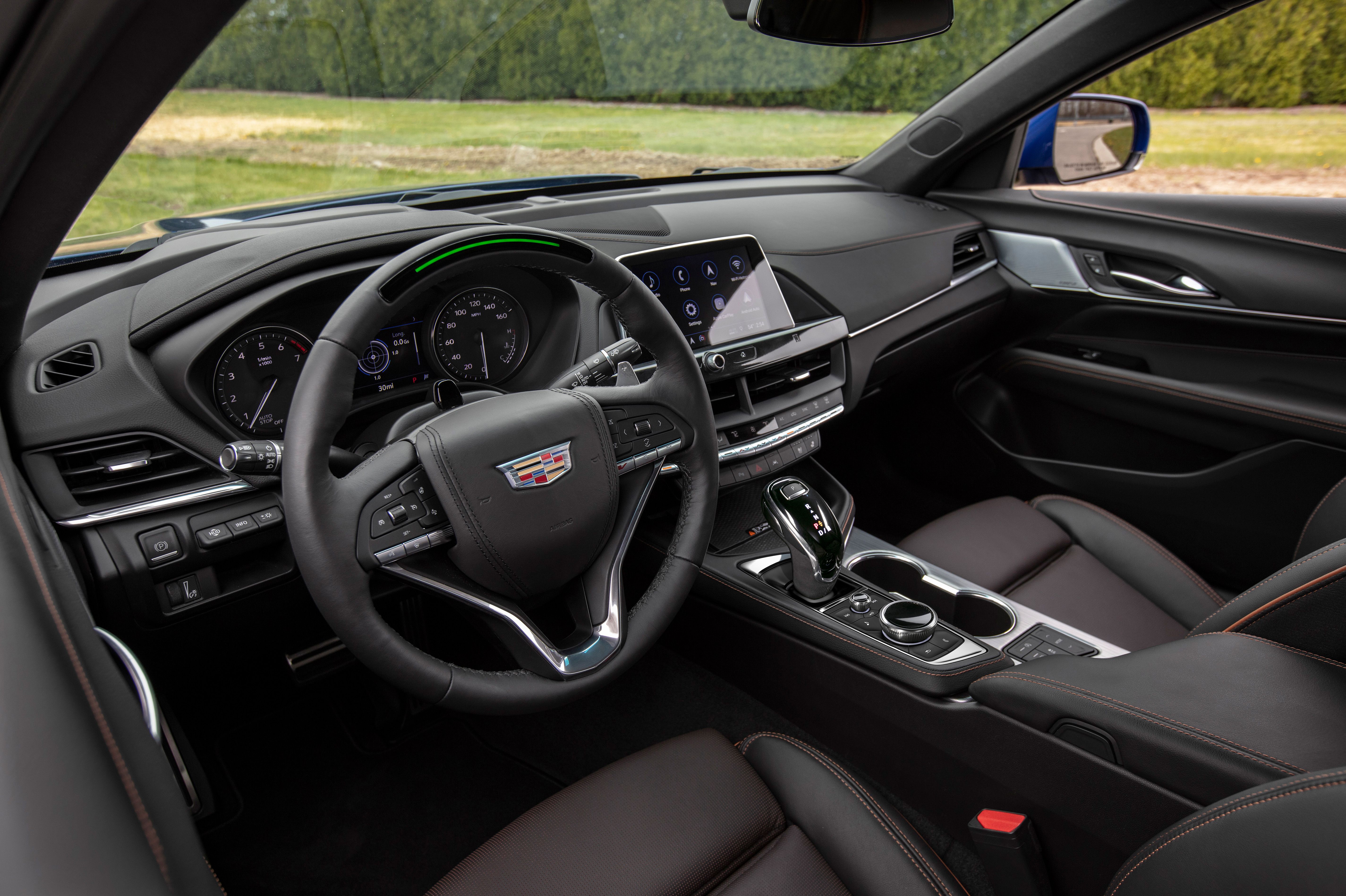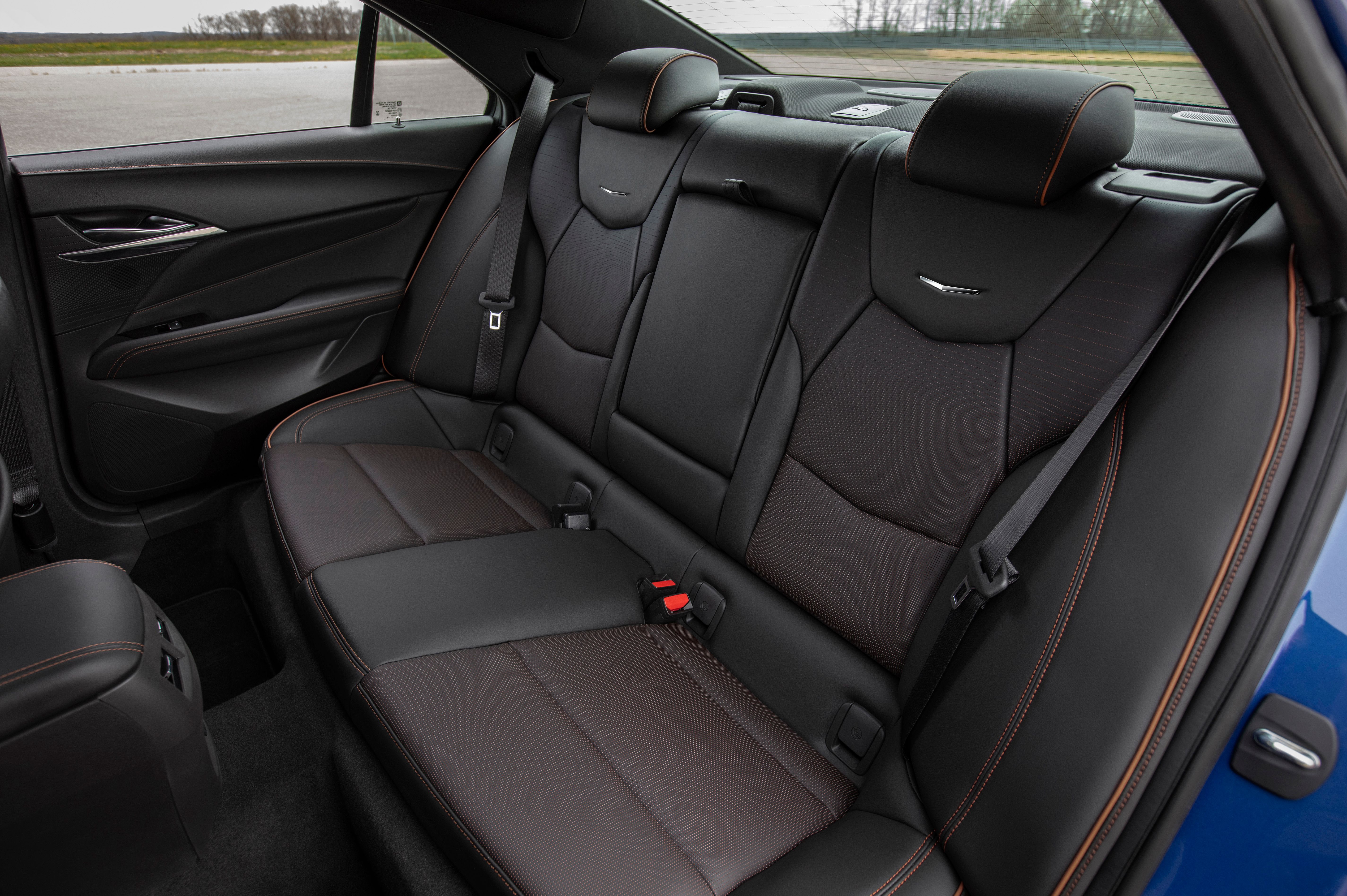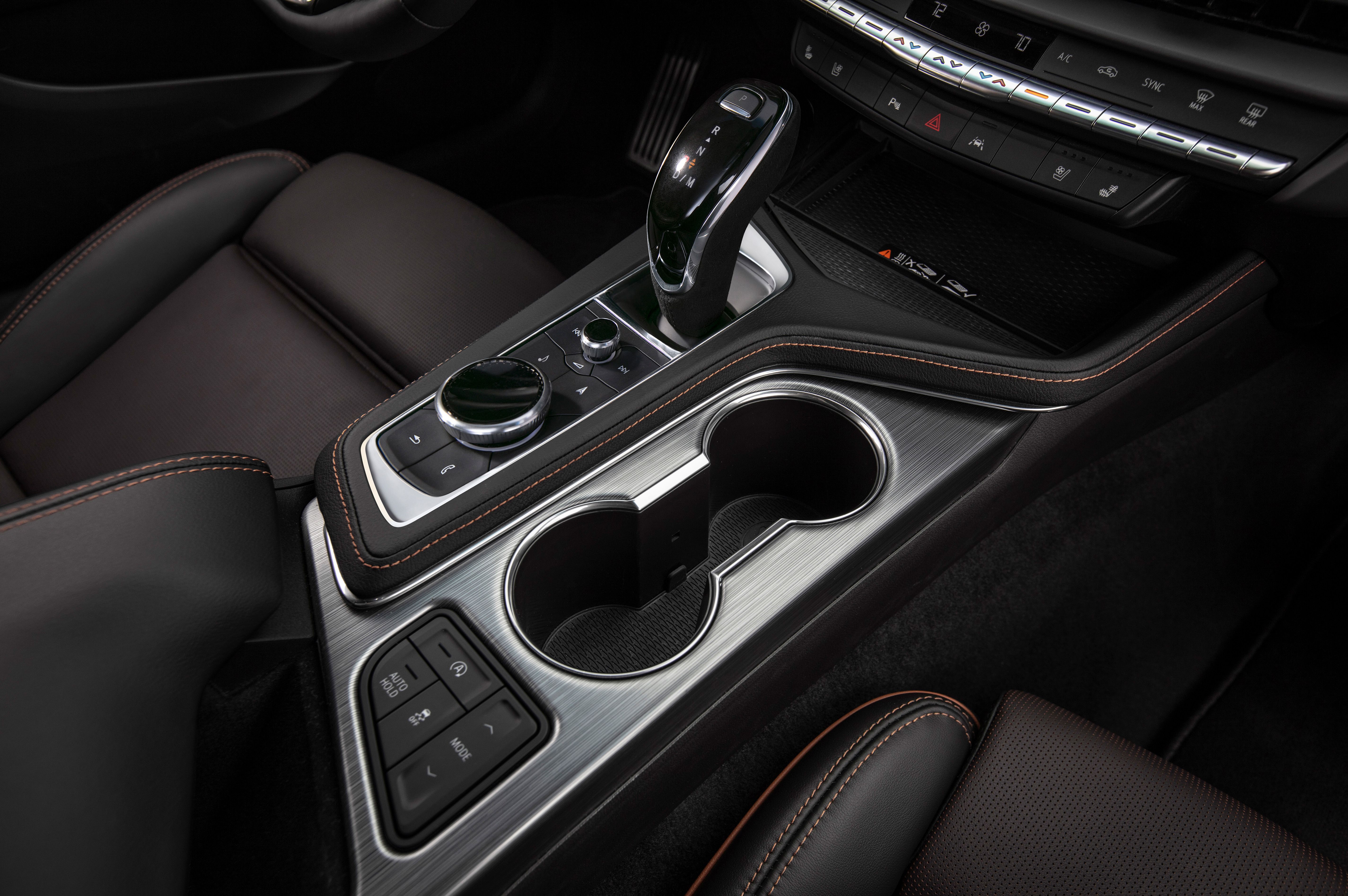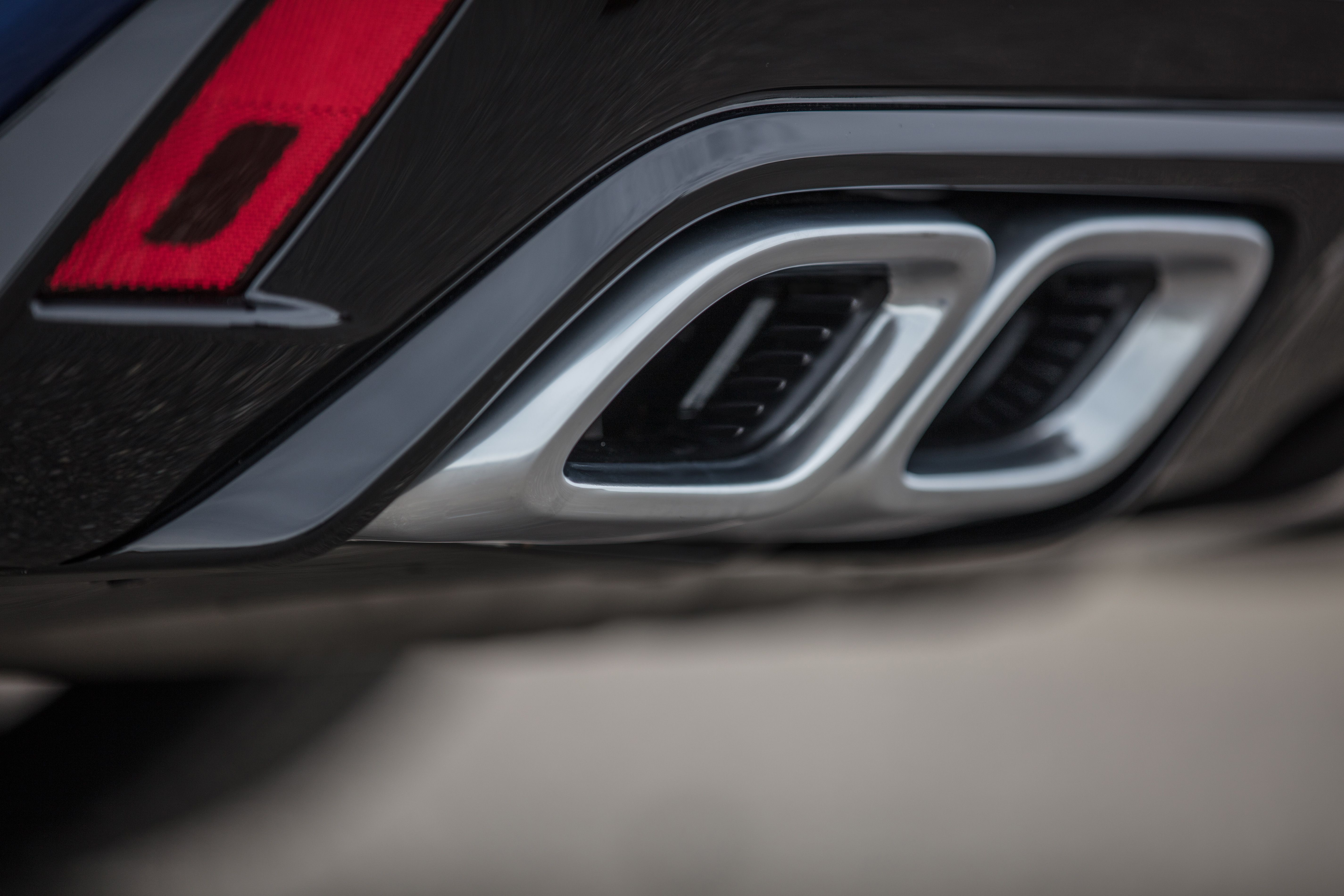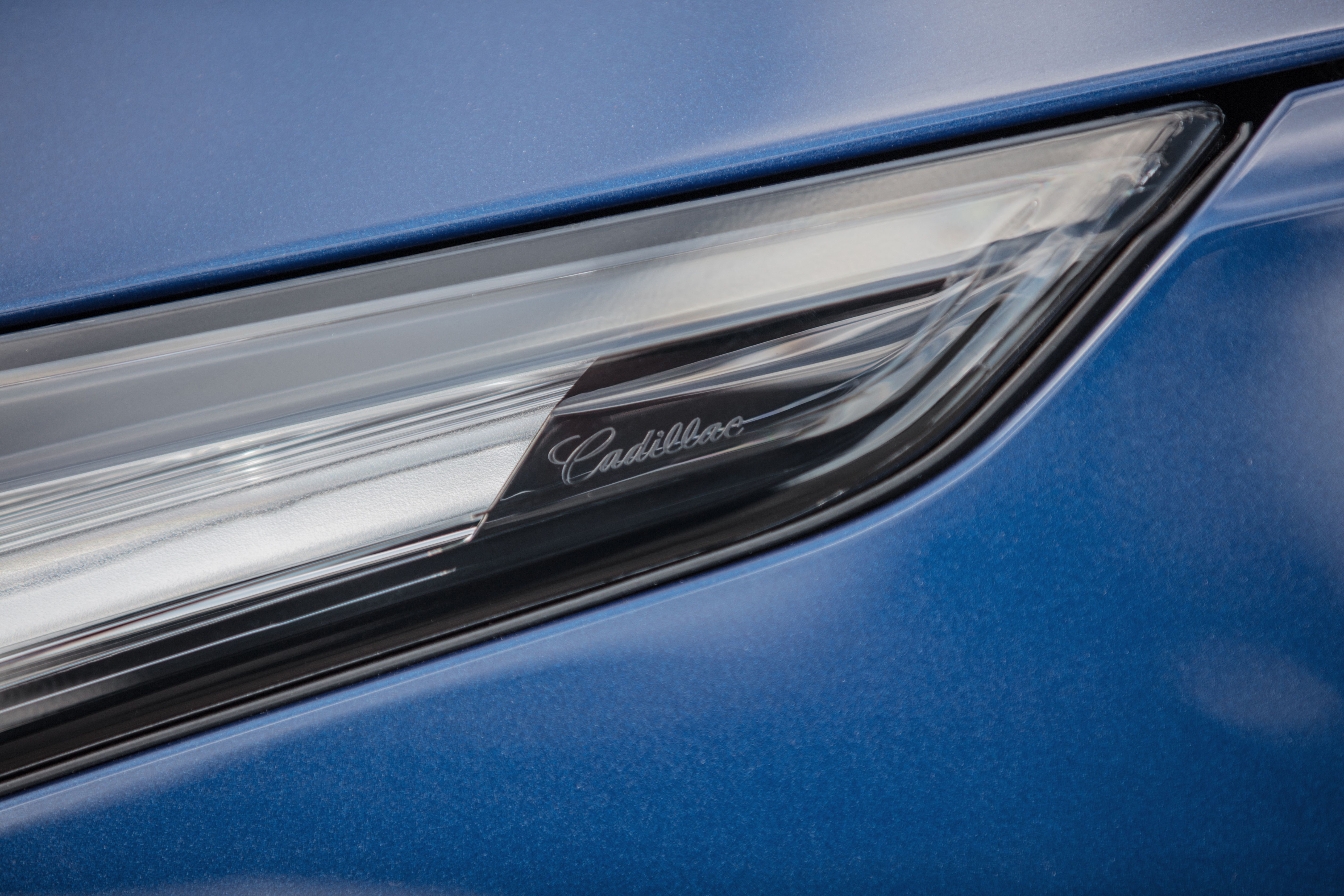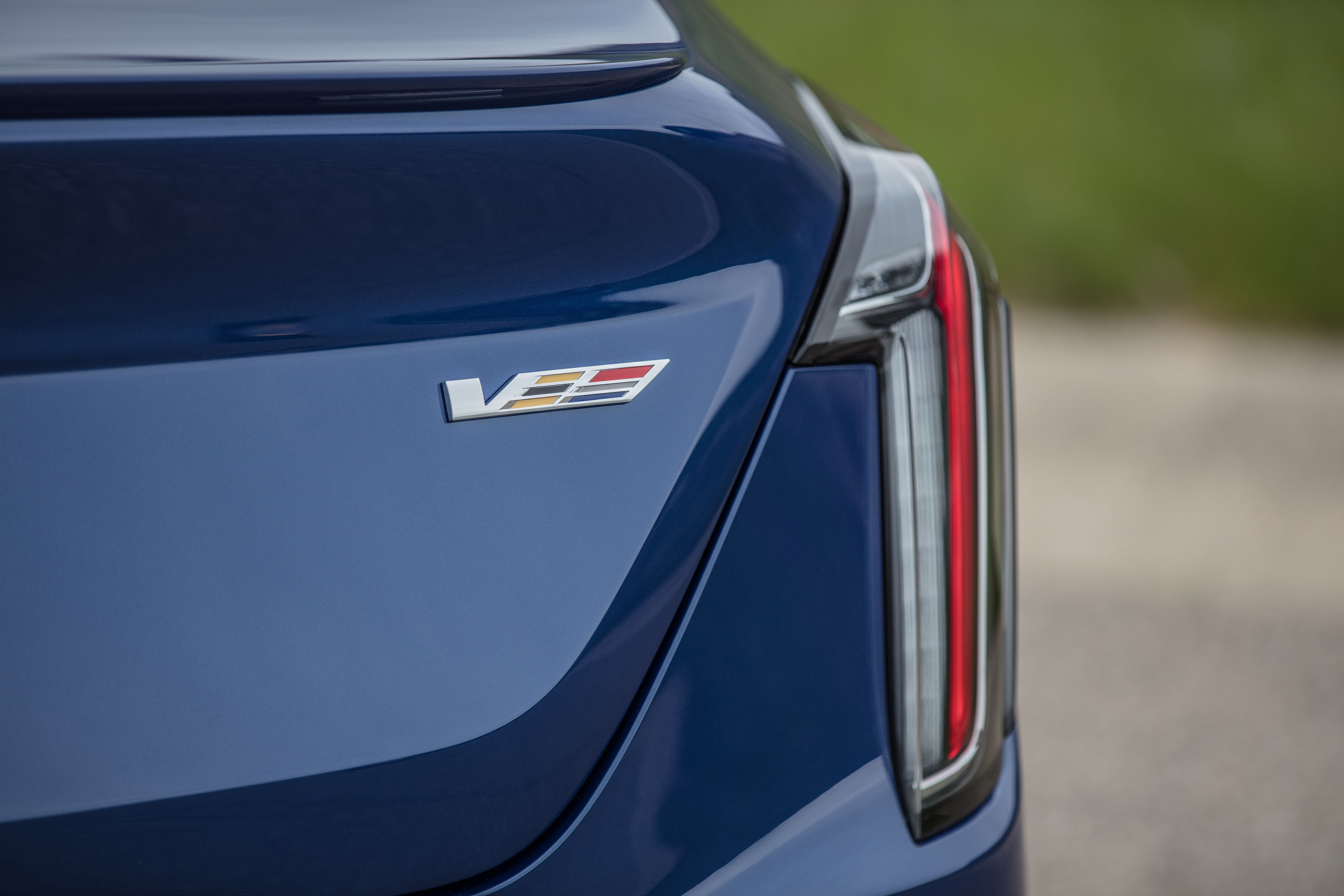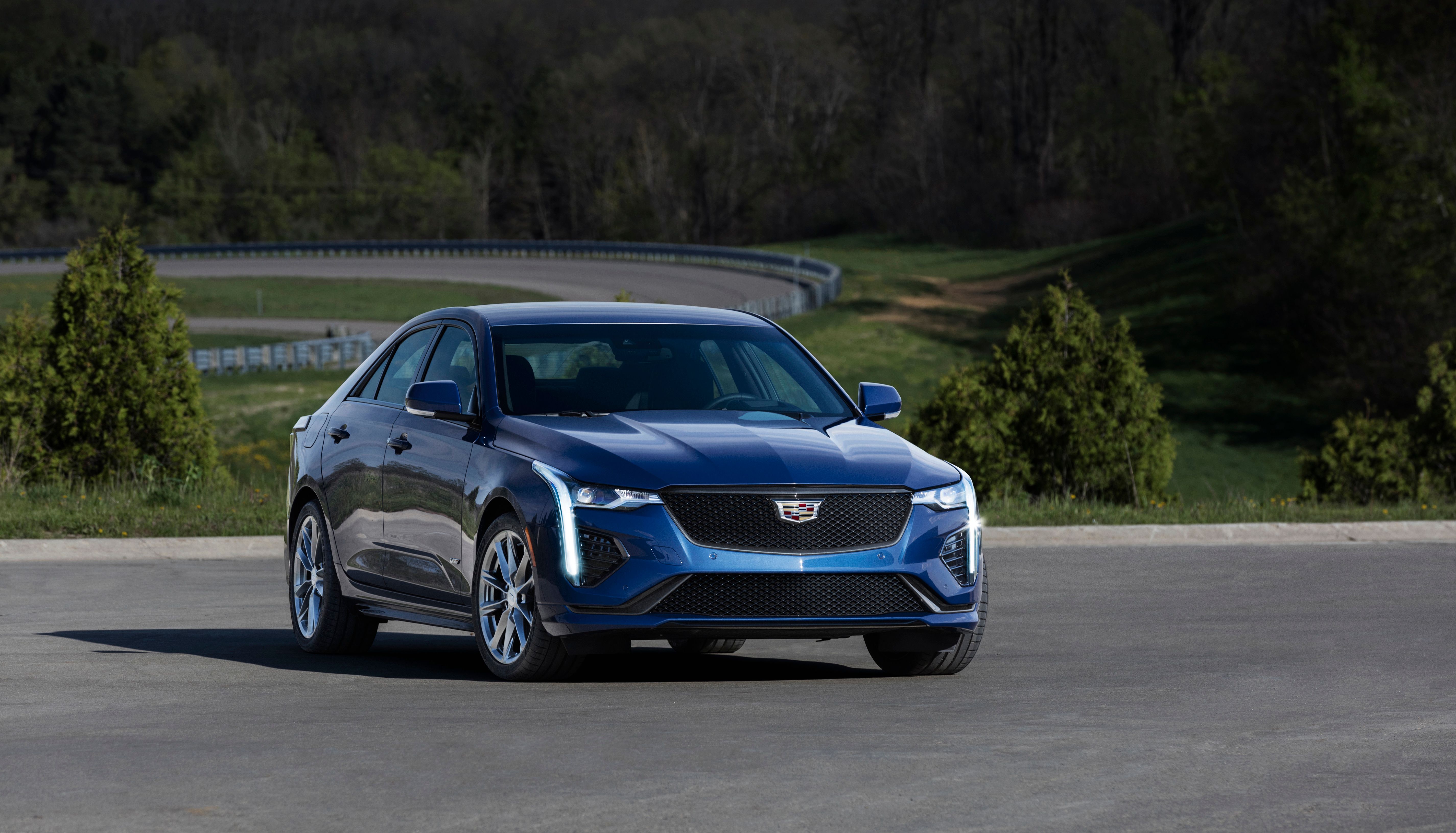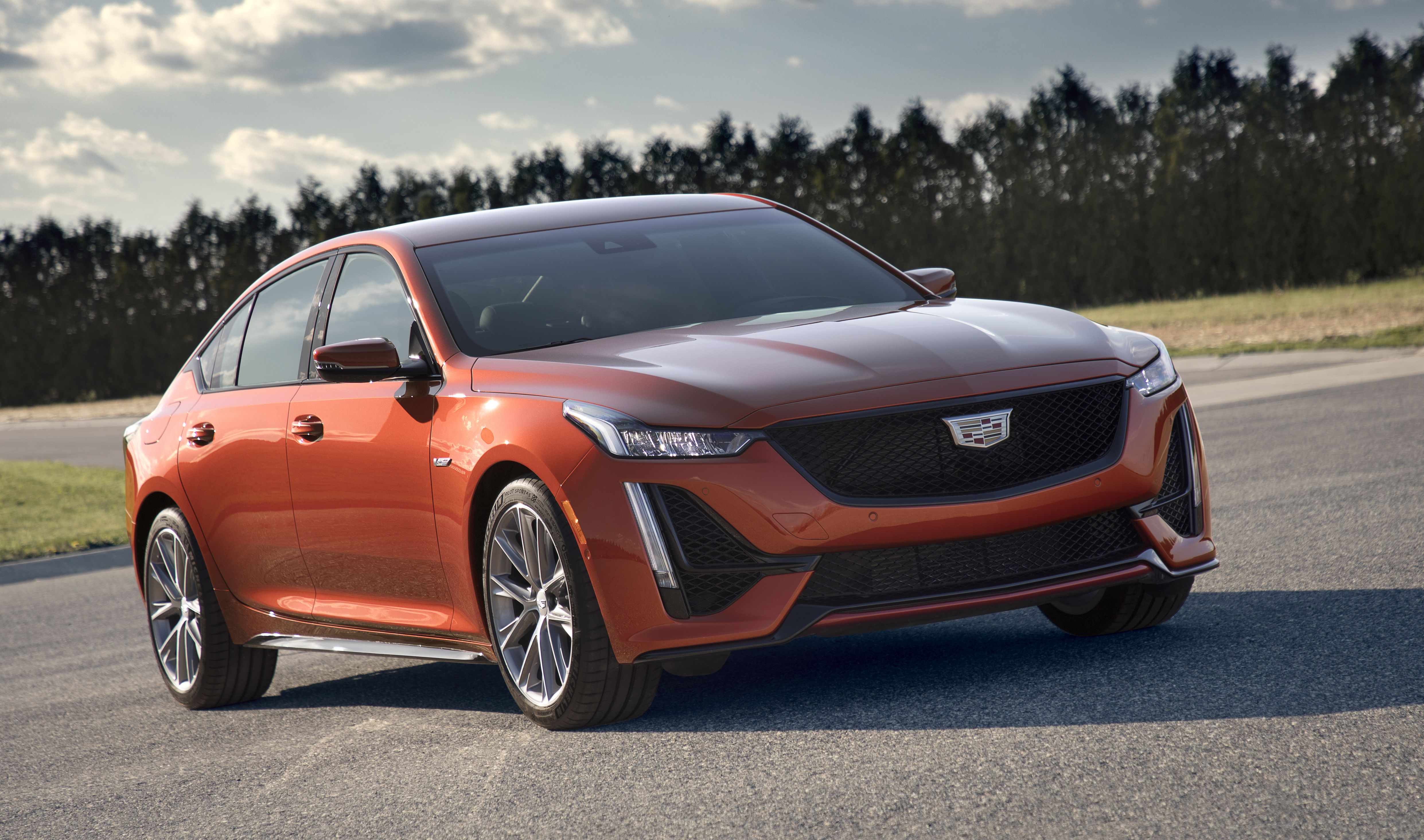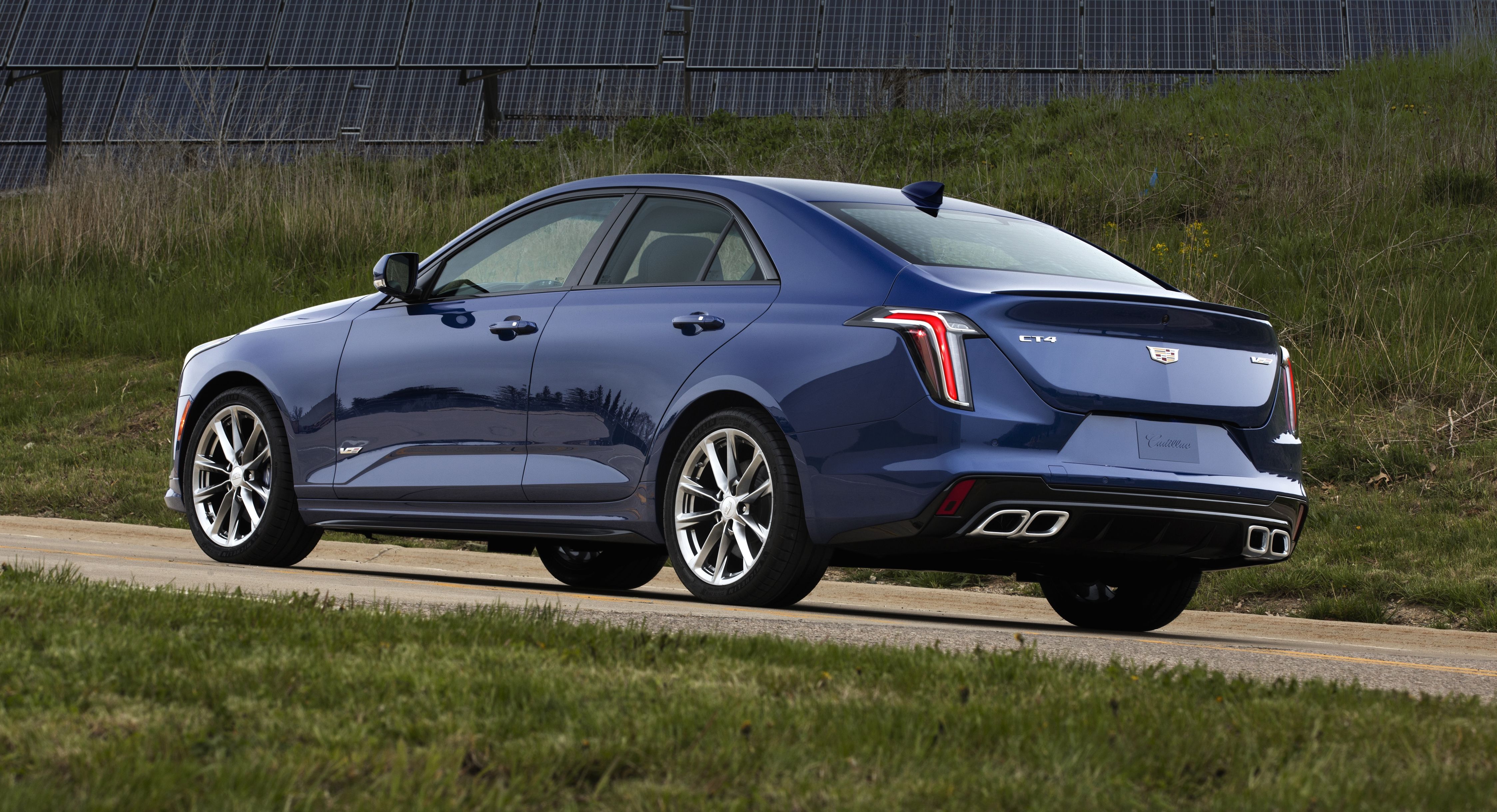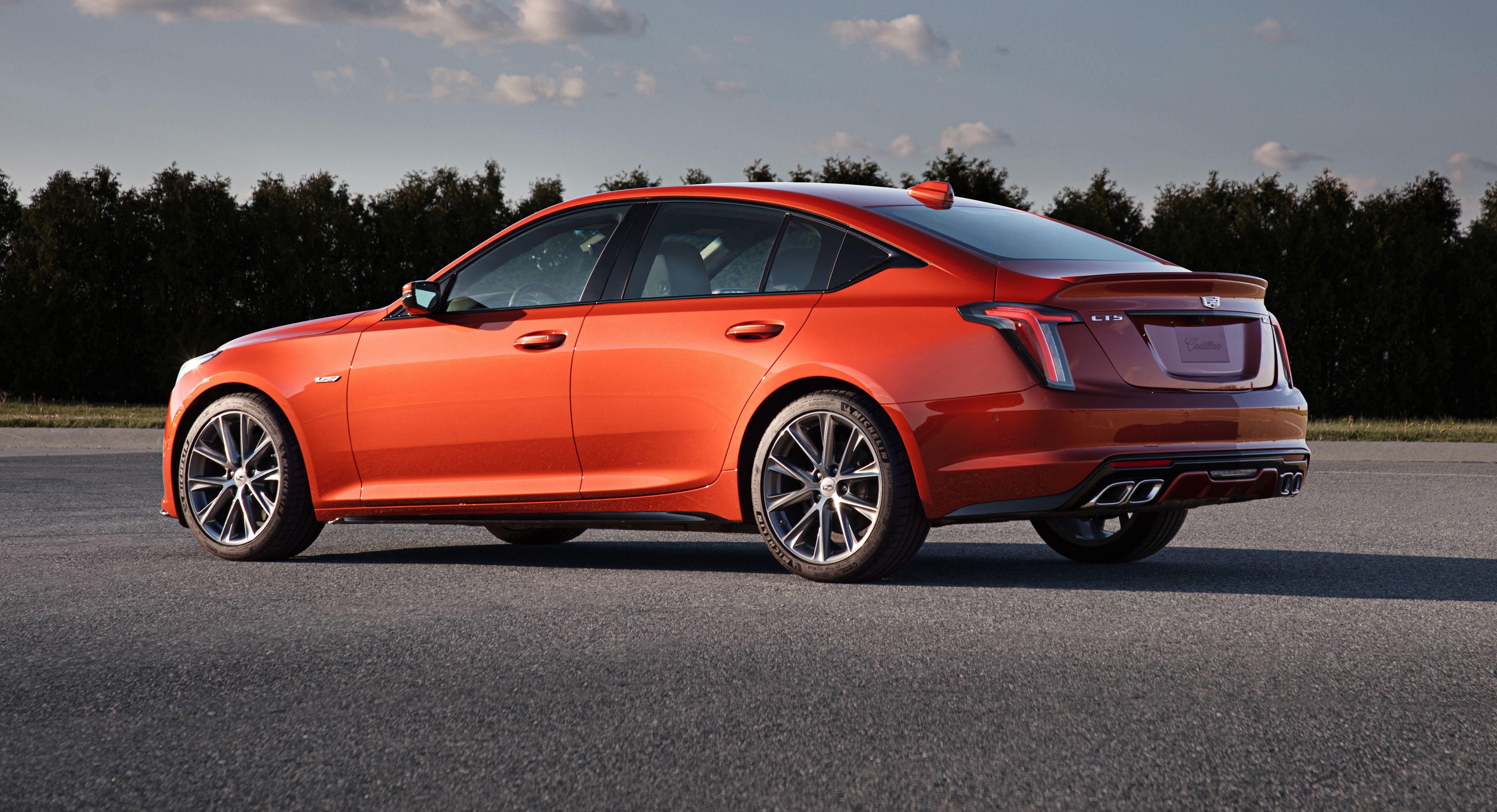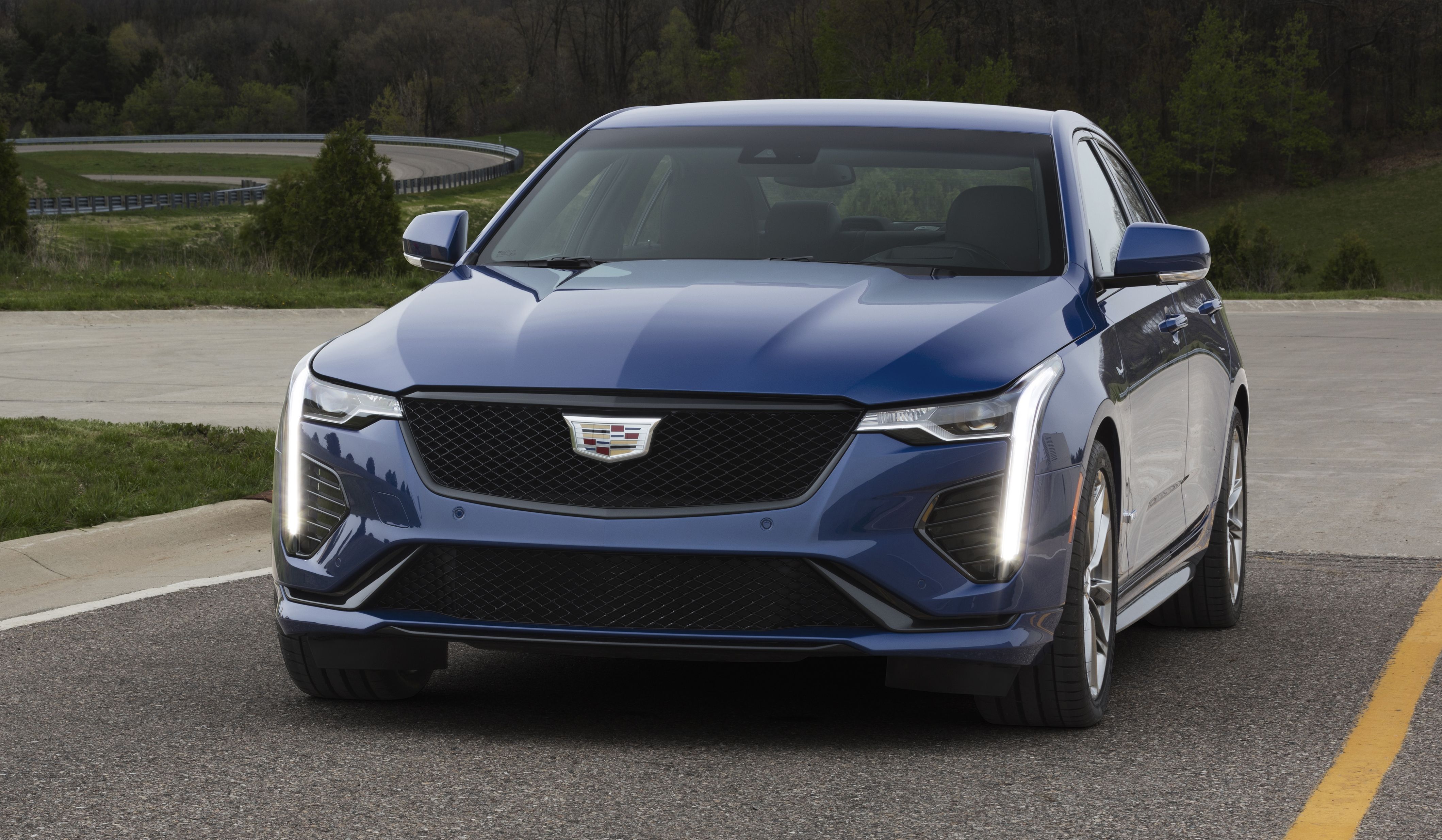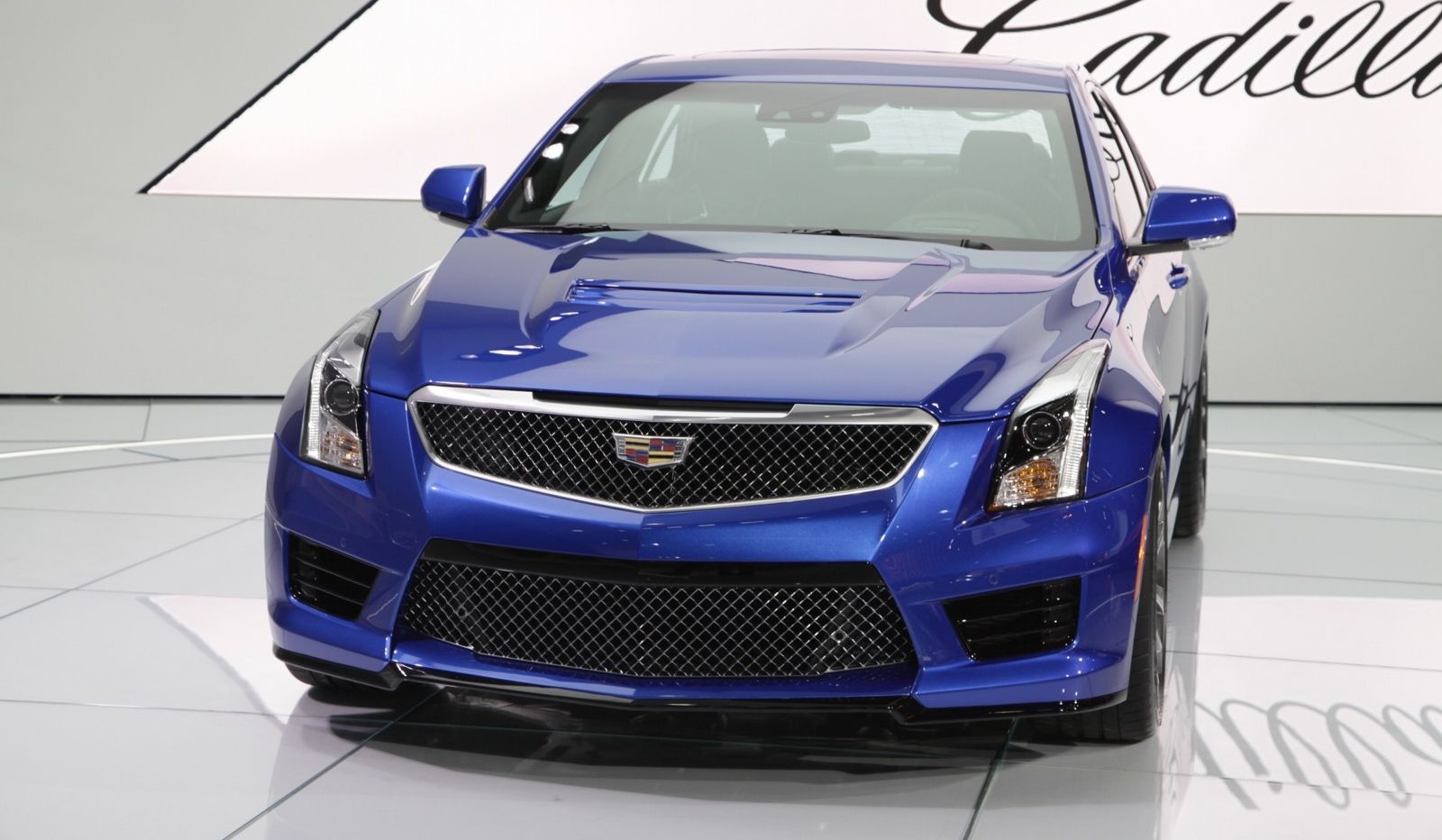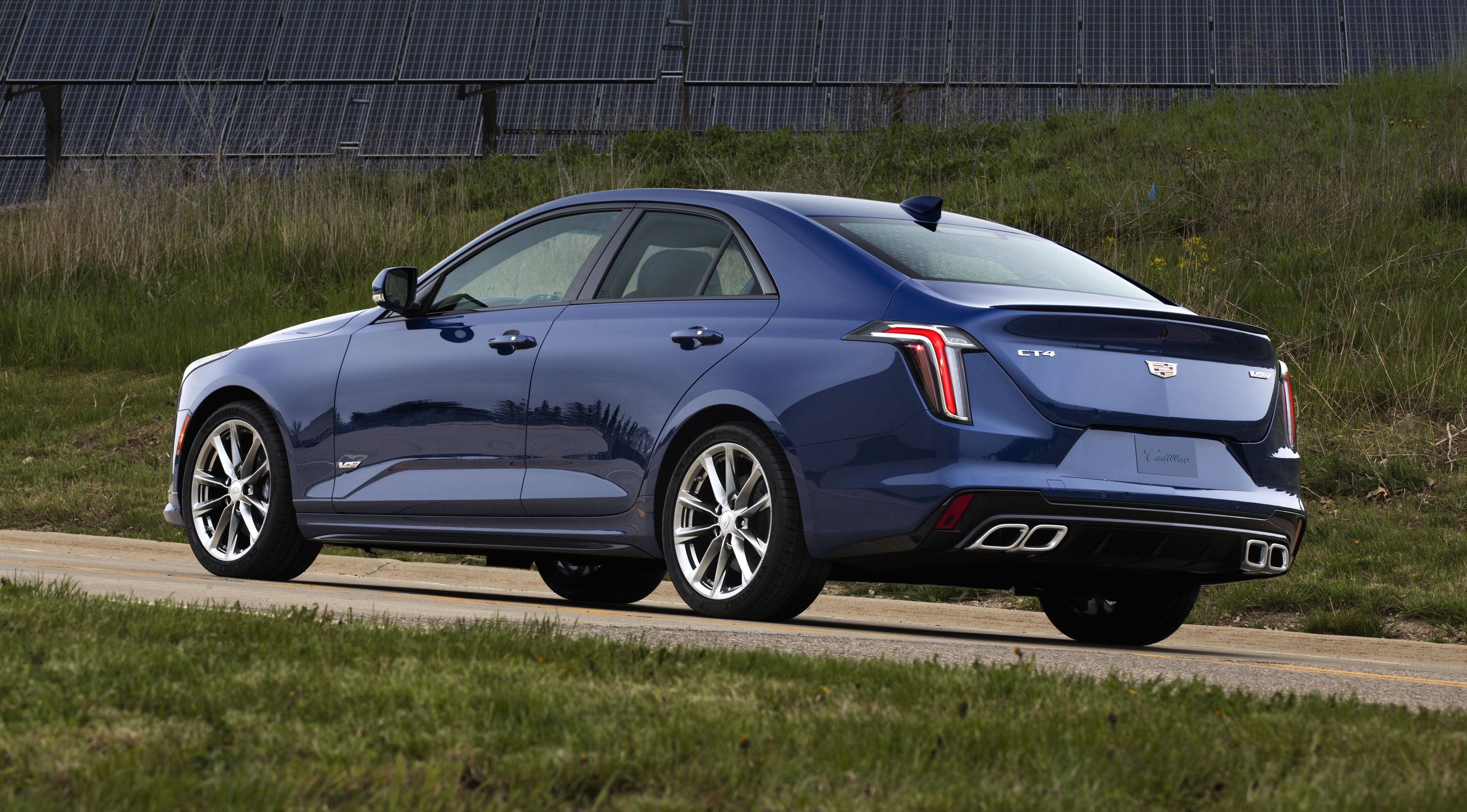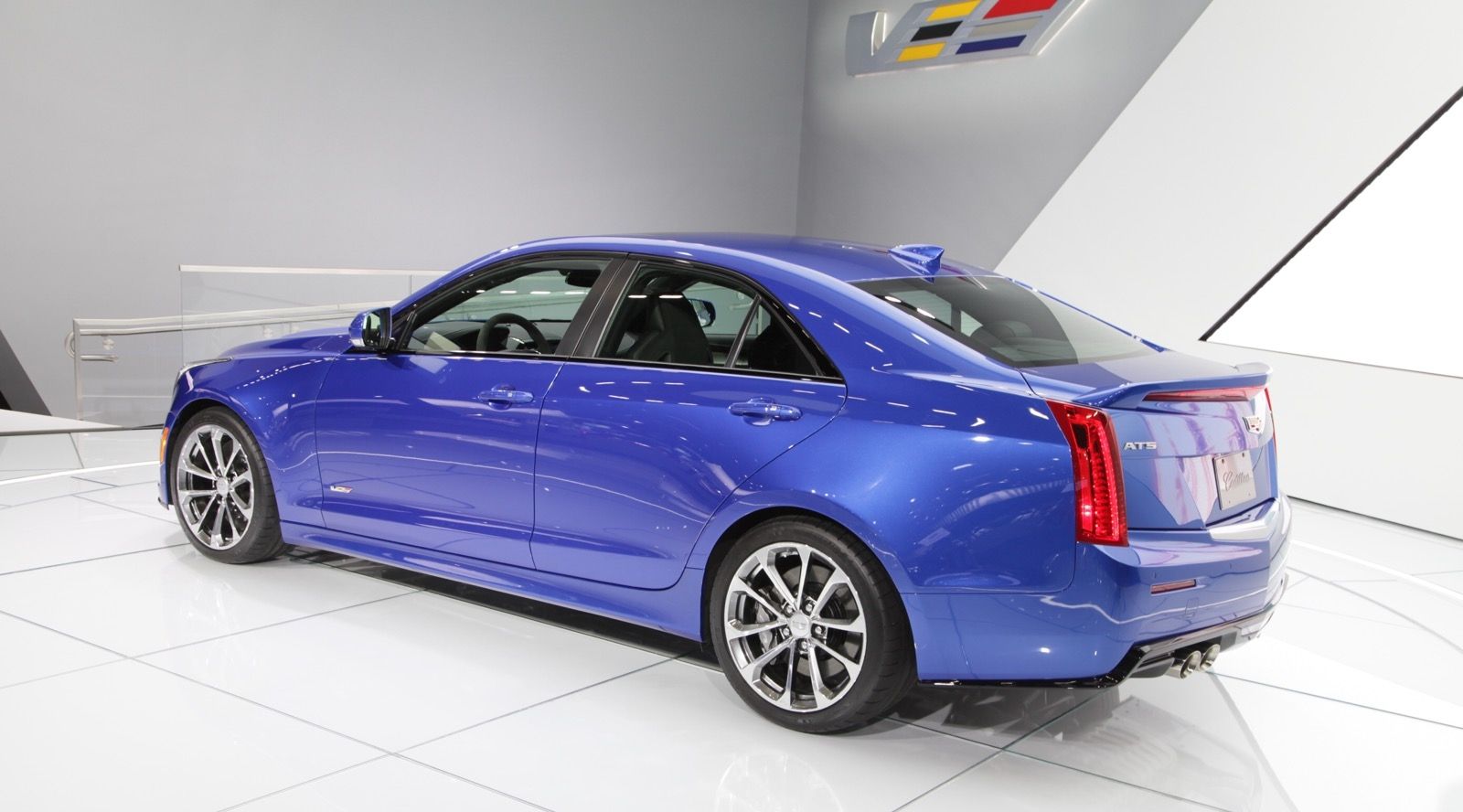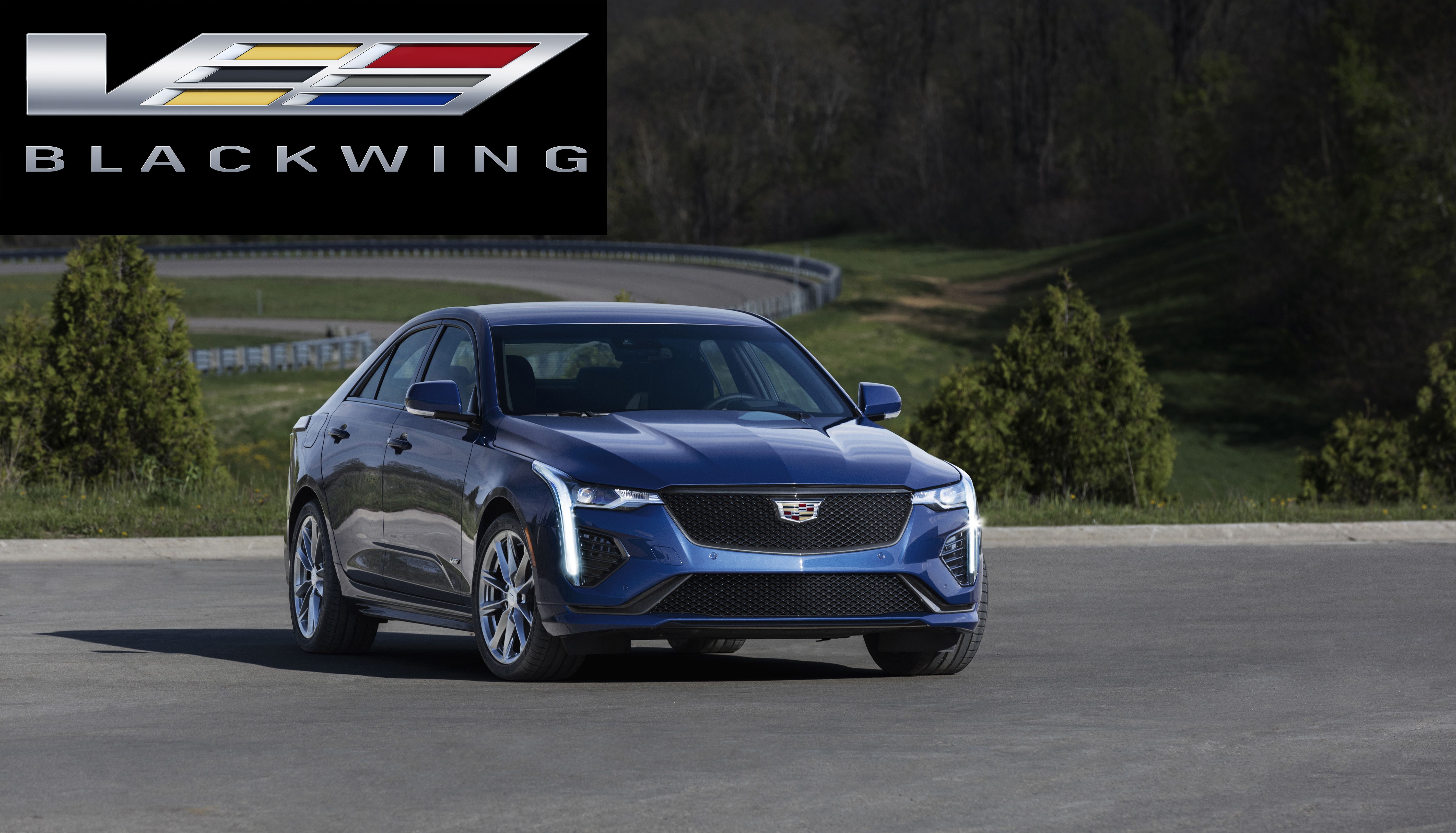The 2020 Cadillac CT4-V is the company's latest compact performance car and a replacement for the 2019 ATS-V. The CT4-V is based on the CT4, a sedan that's set to break cover later in 2019. The CT4-V marks Cadillac's return to the performance compact sedan market, currently dominated by BMW, Mercedes-Benz, and Audi. However, the CT4-V doesn't go against the high-profile BMW M3, and Mercedes-AMG C63 like its predecessor did.
While the 2019 ATS-V came with a V-6 engine rated at more than 450 horsepower, the 2020 CT4-V features a smaller engine with a smaller output. The new compact features the 2.7-liter four-cylinder that debuted in the 2019 Chevrolet Silverado truck and hits the road with a little over 300 horsepower. Does it have what it takes to compete with Germany's finest performance sedans? Let's find out in the review below.
2020 Cadillac CT4-V
- Make: Array
- Model: 2020 Cadillac CT4-V
- Engine/Motor: V6
- Horsepower: 320 @ 5600
- Torque: 369 @ 1800
- [do not use] Vehicle Model: Array
<
Exterior
|
|
ids=843382,843383 |
no_overlay=false |
before_label=2020 Cadillac CT4-V |
after_label=2020 Cadillac CT5-V> |
Not surprisingly, the CT4-V looks a lot like the CT5-V. Just like the ATS borrowed heavily from the CTS, the CT4 is a shrunken CT5 with some unique features. The V models follow suit as they share similar sporty features.
In the front, we can see the trademark trapezoidal grille with a honeycomb-style mesh, just like on the CT5-V. It's flanked by thin horizontal headlamps that look similar as far as shape and size go, but with a different design under the plastic cover. There are round lights toward the sides and horizontal units toward the interior. Just like the CT5-V, the CT4-V has vertical LED lights on the sides. However, while the CT5-V's are split in two by the bodywork, the CT4-V's are single units with an arched design running from the bottom of the engine hood to the lower bumper.
|
|
ids=843386,843387 |
no_overlay=false |
before_label=2020 Cadillac CT4-V |
after_label=2018 Cadillac ATS-V> |
The latter also looks familiar. There are triangular vents just under the headlamps, while the central intake is wider at the bottom and narrower at the top. The areas were the intake becomes narrower toward the sides feature black blade-like elements for added sportiness. Down below, there's the usual splitter that improves aerodynamics. Like any modern V-spec model, all chrome trim has been replaced with black elements.
The CT4-V's profile looks a bit more generic than the CT5. While the midsize sedan features an elongated, coupe-style roof that moves it away from the regular three-box design, the CT4-V remains a traditional sedan. The thick C-pillar reminds me of the old ATS, so I guess Cadillac wanted to keep the CT4-V familiar. Other than that, there's nothing much to report. The way the headlamps and taillights crawl up on the fenders give the profile a niche, futuristic touch, but everything else is as classic as it gets. And that's a good thing since Cadillac's compacts are usually more elegant than the competition.
|
|
ids=843388,843389 |
no_overlay=false |
before_label=2020 Cadillac CT4-V |
after_label=2018 Cadillac ATS-V> |
The rear of the CT4-V looks even more like the CT5-V. Both share the trapezoidal trunk lid shape that mimics the front grille, the sporty bumper with the protruding character line just above the diffuser, and vertical taillights. Just like on the CT5-V, the CT4-V's taillights extend horizontally into the fenders, as well as toward the trunk lid. An integrated spoiler helps reduce rear axle lift while increasing grip, just like on the CT4-V.
Even the diffuser integrated into lower bumper looks similar to the CT5, except for the tiny red reflectors on the sides. The exhaust pipes are placed in the exact same position. As a V-badged sedan, it has a quad-exhaust layout. But there is one design feature that's different. While the CT5 has the license plate recess on the trunk lid, the CT4 sports it between the lid and the diffuser. Comparing the two, I think I prefer the CT4-V's position as it results in a less cluttered overall design.
|
|
ids=843384,843385 |
no_overlay=false |
before_label=2020 Cadillac CT4-V |
after_label=2020 Cadillac CT5-V> |
How does it compare to rivals like the BMW M3 and Mercedes-AMG C63? Well, the CT4-V doesn't look as aggressive. But its the boxier, more elegant design that sets it apart. If it's a sleeper performance car you're looking for, the CT4-V is just right.
As far as size goes, the CT4-V is slightly bigger than its predecessor, the ATS-V. The new sedan is 187.2 inches long, about 4.5 inches longer than the old four-door. The CT4-V is only 0.4 inches wider at 71.5 inches and just a tenth-inch taller. The CT4-V's wheelbase measures 89.6 inches, and it's identical to the ATS-V.
Interior
Cadillac has made a habit of launching new cars without much information about the cabin. It did it with the CT5 and now did it again with the CT4-V. And the CT4-V arrived before the CT4, so we don't know much about this new compact as far as interior technology goes. The good news is that Cadillac released photos of the interior, so we can at least see what's going on design-wise.
The first thing I can gather here is that Cadillac copy pasted most of the CT5's interior into the CT4. The center stack is actually identical, with a slightly trapezoidal display placed above the A\C vents. The A/C vents are also identical, as are the tiny knobs above. Below the vents, we can see the same control panel for the air conditioning system. The similarities continue on the center console. The CT4-V has the same arrangement as the CT5-V, with the gear shifter on a separate console on the left, a storage bin in the front, and cup holders on the right. The steering wheel, the instrument cluster, and the A/C vents at the corners of the dashboard are also identical to the CT5-V.
Moving over to the design features that are notably different, Cadillac seems to have redesigned the door panels. The upper panels have a sportier design, the door openers sit higher, while the pockets are deeper. The control panel for the windows is also different. While the CT5-V has all the controls in one angled unit near the door armrest, the CT4-V has them scattered on the armrest and the upper section of the door panel.
As I mentioned above, Cadillac didn't release much information about the features but did say that the CT4-V comes with a unique instrument cluster design and a V-Mode button on the steering wheel. Unfortunately, since the standard CT4 has yet to be revealed, we can't make a proper comparison to extract the features specific to this V-badged model.
Based on the previous Cadillac with V-spec features, the CT4-V should have a more detailed performance display, extra apps that measure performance, and sportier seats (as seen in the photos). The steering wheel doesn't have the usual flat bottom, but there's a green bar at the top that likely signals when it's best to change gears. Leather is probably standard, but Cadillac should offer an Alcantara option. The CT4-V also appears to have contrast stitching on the seats, the door panels, and the center console.
When it comes to passenger space, the CT4-V is actually a tad smaller than the ATS-V. Front headroom is rated at 38.4 inches, a 0.2-inch decrease from the old model. Rear headroom is 36.5, 0.3 inches smaller than the ATS-V. The decrease in legroom is similar. The CT4-V lost 0.3 inches in the front at 42.2 inches and 0.1 inches in the rear at 33.4 inches. Shoulder room remains identical at 55.2 inches in the front and 53.9 inches in the rear, as does hip room in the front at 53 inches. The CT4-V's only gain compared to the ATS-V is in rear-seat hip room, which increased by 0.3 inches at 52.5 inches. Overall, the CT4-V is just as roomy as its predecessor as the decrease is far from significant.
Cadillac CT4-V vs. Cadillac ATS-V interior dimensions
|
Headroom(in / mm): |
39.0 inches / 990 (front)36.6 inches / 930 (rear) |
38.6 inches / 980 (front)36.8 inches / 935 (rear) |
|---|---|---|
|
Legroom(in. / mm): |
42.4 / 1078 (front)37.9 / 963 (rear) |
42.5 / 1079 (front)33.5 / 851 (rear) |
|
Shoulder Room(in. / mm): |
56.7 / 1440 (front)55.7 / 1416 (rear) |
55.2 / 1345 (front)53.9 / 1370 (rear) |
|
Hip Room(in. / mm): |
53.7 / 1365 (front)53.7 / 1365 (rear) |
53 / 1345 (front)52.3 / 1328 (rear) |
Drivetrain
Just like its predecessor, the ATS-V, the CT4-V rides on GM's rear-wheel-drive Alpha platform. Introduced in 2013 with the ATS, the Alpha architecture underpinned the CTS and currently underpins the CT5 and the Chevrolet Camaro as well. But while the CT4-V shares underpinnings with the ATS-V, the two sedans have radically different engines. While the ATS-V featured GM's familiar 3.6-liter V-6, the CT4-V has been downgraded to a 2.7-liter four-cylinder.
Known as the L3B, this turbocharged engine was introduced in the 2019 Chevrolet Silverado. Yes, the Cadillac CT4-V has a truck engine under the hood! The twin-turbo unit features a unique three-step sliding camshaft that helps optimize performance at all speeds and mates to a 10-speed automatic transmission. The bad news is that the CT4-V lost a lot of power compared to the ATS-V.
Specifically, the 2.7-liter four-banger cranks out 320 horsepower and 369 pound-feet of torque. That's a 144-horsepower and 76-pound-foot reduction compared to the ATS-V. While the latter was surprisingly competitive against its rivals, the CT4-V obviously falls behind in terms of output. Compared to the BMW M3, rated at 444 horsepower and 406 pound-feet, the CT4-V lacks a solid 124 horses and 37 pound-feet. Things are even worse when compared to the Mercedes-AMG C63, which cranks out 469 horsepower and 479 pound-feet from its 4.0-liter V-8. That's 149 horsepower and 110 pound-feet more than the CT4-V. If we compare it to the range-topping AMG C63 S, which comes with 503 horsepower and 516 pound-feet on tap, the CT4-V falls behind by a whopping 183 horsepower and 147 pound-feet.
The difference between the CT4-V and the German high-performance sedans is so great that we actually need to go down a level for a more accurate comparison. But even the less powerful Mercedes-AMG C43 and BMW M340i deliver notably more oomph. The Merc, for instance, features a 3.0-liter V-6 that packs 385 horsepower and 384 pound-feet of twist. That's an extra 65 horses and 15 pound-feet. The BMW M340i is similar, sporting a 3.0-liter inline-six mill that cranks out 382 horsepower and 369 pound-feet, which accounts for a 62-horsepower increase over the CT4-V. All told, the CT4-V is actually positioned between the Mercedes-Benz C300 and AMG C43 and between the BMW 330i and the M340i. Quite sad given that the ATS-V was a full-fledged competitor for the AMG 63 and the M3.
We don't know how quick the CT4-V is as of this writing, but it should be notably smaller than its German rivals. Both the Merc and Bimmer hit 60 mph in 4.5 seconds or less (depending on drivetrain layout), so the CT4-V will probably reach the benchmark in around 4.8 clicks.
Is Cadillac planning to build a more powerful version of the sedan? We don't know yet, but chances are a more powerful CT4-V won't happen, and this means that Caddy just kicked itself out of the high-performance compact segment.
Purists might also be upset by the fact that Cadillac doesn't offer a manual transmission, but this is far from unusual, as both the BMW M3 and Mercedes-AMG C63 have automatic gearboxes only. But unlike Mercedes-AMG, Cadillac offers the CT4-V in both rear-wheel and all-wheel drive configuration.
Models with rear-wheel drive feature Cadillac's latest Magnetic Ride Control 4.0 suspension. Specifically tuned for the V model, this system enhances comfort without sacrificing responsiveness. It also includes a V-Mode setup that allows personalization of the drivetrain. If you go with an all-wheel-drive system, Cadillac will replace the Magnetic Ride Control unit with ZF MVS passive dampers.
The sedan is also fitted with a limited-slip rear differential. Stopping power comes from Brembo brakes with eBoost electronic assist in the front. Cadillac says that the CT4-V has a near-perfect 50/50 weight distribution.
Driver Assistance Systems
Cadillac didn't have much to say about the CT4-V's driver assistance systems, but it's safe to assume that it borrows several technologies from the bigger CT5. The base CT5, for instance, comes with standard features like Traction & Stability Control, HD Rear Vision Camera, Forward Collision Alert, Front Pedestrian Braking, Automatic Emergency Braking, Safety Alert Seat, and Reflective LED windshield collision alert.The more expensive trims add standard features like Lane Change Alert with Side Blind Zone Alert, Rear Cross Traffic Alert, Rear Park Assist, and auto-dimming mirrors.
Cadillac confirmed that its Super Cruise driver assistance system will be optional for the CT4-V. Described as the "world’s first true hands-free driver assistance system," it enables you to drive hands-free "on more than 130,000 miles of limited-access freeways in the United States and Canada." Just like any semi-autonomous system, it uses LiDAR map data, a high-precision GPS, and a network of camera and radar sensors to drive the car without driver input.
Pricing
Pricing information is not yet available, and we don't even have a sticker for the non-V model to run by. However, given that the CT4-V is less powerful than the Mercedes-AMG C43 and the BMW M340i, it should cost less than these models, which retail from around $55,000. Cadillac could ask a bit more though, but a sticker close to the $60,000 mark would be suicidal.
Competition
Due to the CT4-V's drastic power drop compared to the ATS-V, it's time to forget about the BMW M3 and Mercedes-AMG C63 as competitors. Instead, the American sedan will go against the lower performance trims of these cars.
Mercedes-AMG C43
Introduced in 2016, the AMG C43 bridges the gap between the C300 and the AMG C63 in the U.S. Naturally; it's a bit more aggressive than the non-AMG C-Class models, but not quite as sporty as the AMG C63. The C43 bridges the gap between its sibling when it comes to the engine too. While C300 features a four-cylinder and the AMG C63 a V-8, the C43 draws juice from a 3.0-liter V-6. The mill cranks out 362 horsepower and 384 pound-feet of torque, enabling the sedan to hit 60 mph from a standing start in 4.5 seconds. The engine mates to a seven-speed automatic transmission and a permanent four-wheel-drive system. The Mercedes-AMG C43 retails from $55,250.
Read our full review of the 2019 Mercedes-AMG C43.
BMW M340i
BMW just redesigned the 3 Series for the 2019 model year and launched a new M340i trim alongside the familiar 330i model. Just like the AMG C43, the M340i bridges the gap between the 330i and the range-topping M3 version. The M340i's revised 3.0-liter six-cylinder turbo engine generates 382 horsepower and 369 pound-feet of torque. While not as powerful as its Mercedes-badged rival, the Bimmer delivers notably more power than the Cadillac. Just like the CT4-V, it comes standard with rear-wheel drive, but you can opt for the company's xDrive AWD system. The sprint to 60 mph takes 4.4 seconds with the RWD model and 4.1 seconds with the AWD version. Pricing for the M340i starts from $54,000. The AWD system adds an extra $2,000.
Read our full story on the 2020 BMW M340i.
Final Thoughts
Although I like the way it looks inside and out, I must admit that the CT4-V is a big disappointment performance-wise. I know power isn't always everything, but let's face it, Cadillac cut an awful lot of power compared to the ATS-V. I'm okay with downsizing, and I think you don't need a big engine for big power, but shaving close to 150 horsepower off the old model is unprecedented. It's like we're back in 1973 when the oil crisis forced all high-performance engines out of the market. I have no idea what Cadillac was thinking, but the 320-horsepower rating removes the CT4-V from the high-performance compact sedan market. Not only it places it below products from Mercedes-AMG and BMW M, but it also places it below the not-so-hot C43 and M340i models. If BMW and Mercedes were to build a slightly more powerful version of the 330i and C300, the CT4-V would fall behind them as well, rendering the "V" badge useless. Making matters worse, the new CT4-V is around 200 pounds heavier than the old ATS-V, so there aren't any gains to talk about. Now I'm not saying the CT4-V will fail completely. But it's surprisingly underpowered for its purpose.
Further Reading
Read our full review on the 2020 Cadillac CT5.
Read our full review on the 2016 Cadillac ATS-V Sedan.
Read our full review on the 2016 Cadillac CTS-V.

